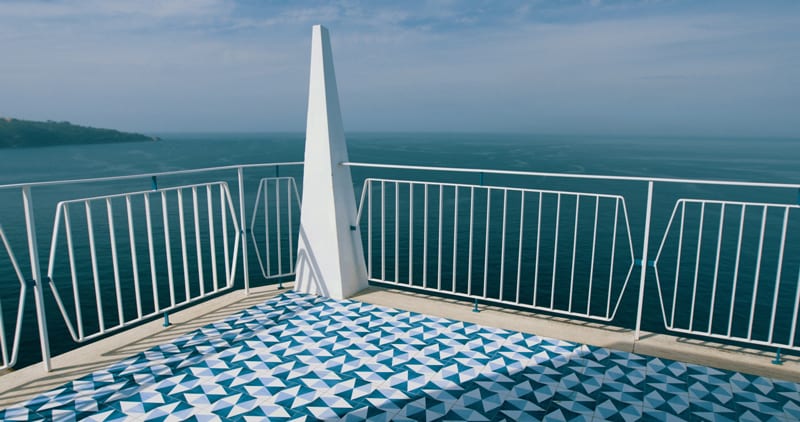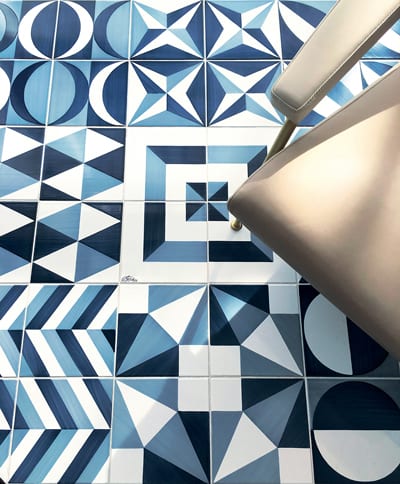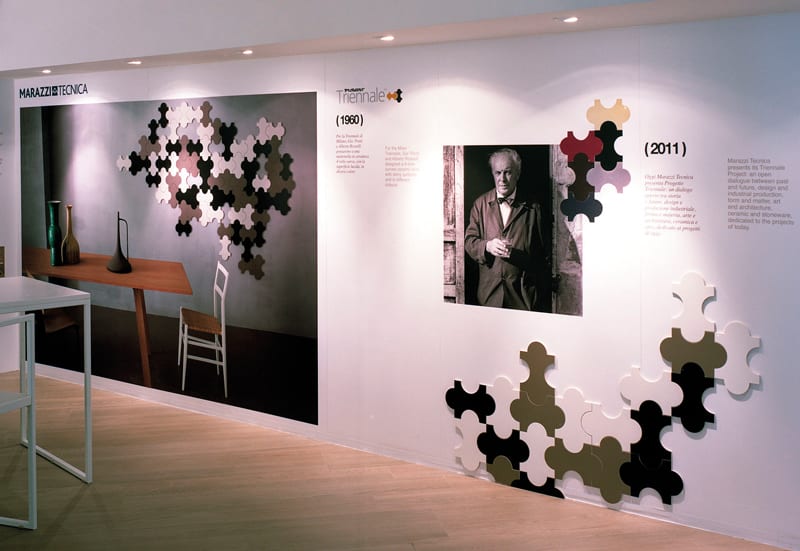Editorials Comments


Combating Covid with the beauty of ceramics | by Pierluigi Masini
The revival of the great design masters, starting with Gio Ponti, is a modern trend in which ceramic also meets the need for healthy spaces.
One image that perfectly captures the role that ceramic can play in the search for the long-awaited “new normal” is that of the Dolce & Gabbana fashion show held on 17 July at the Humanitas Campus in Milan. We have read all kinds of things about the post-Covid future that awaits us, and in particular have witnessed a desire to escape from large cities and return to a simpler world. We have imagined home offices where we can create spaces that can be used for both work and living. And we have come to appreciate what is truly important in the wake of the fear and sorrow that we are continuing to experience. But we are a long way from having any kind of certainty about a new normal that is slow in taking shape, as people long to wake up from the nightmare and pretend that none of this happened. Against this backdrop, let’s take a look at the role of ceramics starting out from one of the world’s most famous fashion brands. What is the connection between fashion and ceramics? And how did that fashion show, held this year after the lockdown, come to symbolise a fresh start for the sector?
 Dolce & Gabbana chose to present their creations inspired by the ceramic tiles designed by Gio Ponti for the Hotel Parco dei Principi in Sorrento, opened in 1960. In a tribute to the great Italian architect, they took some of the 33 different blue and white themes featured in the interiors of the world’s first design hotel and transferred them to fabric. We can draw the following conclusions. Firstly, the fact that the world of fashion has returned to these designs after a period 60 years indicates that they have lost none of their relevance today. The geometric shapes, originally designed for tiles to be produced by D’agostino, the Salerno-based company acquired in 1990 by Ceramica Francesco De Maio, are still so communicative that they can be transferred from a ceramic substrate to a jacket or linen suit while maintaining, and perhaps even increasing, their appeal, freshness and ability to astonish, while adding a unique touch of classicism. And we should remember that when we talk about mindfulness – another term that is particularly in vogue during this period of reflection on the world – we are referring to a state of mind in which we are focused on the present. This attention enables us to see what is truly essential, to keep our feet on the ground and find solutions.
Dolce & Gabbana chose to present their creations inspired by the ceramic tiles designed by Gio Ponti for the Hotel Parco dei Principi in Sorrento, opened in 1960. In a tribute to the great Italian architect, they took some of the 33 different blue and white themes featured in the interiors of the world’s first design hotel and transferred them to fabric. We can draw the following conclusions. Firstly, the fact that the world of fashion has returned to these designs after a period 60 years indicates that they have lost none of their relevance today. The geometric shapes, originally designed for tiles to be produced by D’agostino, the Salerno-based company acquired in 1990 by Ceramica Francesco De Maio, are still so communicative that they can be transferred from a ceramic substrate to a jacket or linen suit while maintaining, and perhaps even increasing, their appeal, freshness and ability to astonish, while adding a unique touch of classicism. And we should remember that when we talk about mindfulness – another term that is particularly in vogue during this period of reflection on the world – we are referring to a state of mind in which we are focused on the present. This attention enables us to see what is truly essential, to keep our feet on the ground and find solutions.

And it so happens that on the ground we find ceramic tiles. If fashion at its highest levels draws inspiration from the design of a tile – even as splendid as one created by Gio Ponti – this means that ceramic represents an authentic design theme and not a mere decorative accessory, a furnishing element rather than a building product. And we know that interior design solutions with that “total look” embraced by Italian companies find their most effective counterpart in ceramic tiles. Now, perhaps for the first time, the fashion world is becoming aware of the important contribution that can be made by this material.
We could talk at length about Gio Ponti and ceramics: from the start of his career as the young artistic director of Richard Ginori in 1923 to the forty-year-old Gio Ponti with a moustache and coiffed hair photographed in front of the ceramic tiled decoration of a famous café; to the pencil drawings for the ceramic tile designs for the hotel in Sorrento, which would be produced in the shades of blue now referred to as “Blu Ponti”. That same year, 1960, Gio Ponti and his son-in-law Alberto Rosselli created the Triennale tile with four curved lines for Marazzi, a classic that is still in production today (it even appears in an Italian commercial for parmesan cheese). Then there is a short but illuminating phrase from Gio Ponti’s 1957 book and manifesto entitled “In Praise of Architecture” that seems to me to be particularly relevant here: “ceramic presents itself as a surface covering, but gives the surface a plastic quality”. In other words it is able to create a sense of depth that goes beyond mere perspective and geometry, breaking out of its inevitable two-dimensionality.

This ability, recognised more than 60 years ago by Gio Ponti, takes on an even greater significance today for the design of spaces that need to convey a different feeling at first sight. And if we consider the use of ceramics in the construction of new private or communal living spaces, another important quality comes into play: health and hygiene.
Looking to the future, one thing that is clear is that we need to ensure much higher levels of cleanliness and hygiene than a few months ago, because the first step in combating the invisible enemy of the coronavirus is to eliminate potential hiding places, cavities and surfaces the virus can adhere to. Just think of the current debate surrounding the reopening of schools, where the focus is quite rightly on social distancing and personal protective equipment for children, as well as the fact that most schools are old, built decades ago using materials that no longer guarantee the requisite health standards. This level of health and hygiene is instead guaranteed by ceramic.
Also see:
• “Ceramics of Italy – Ahead of our Time” tells the story of Italian tile
• Ceramic: a safe choice
September 2020



